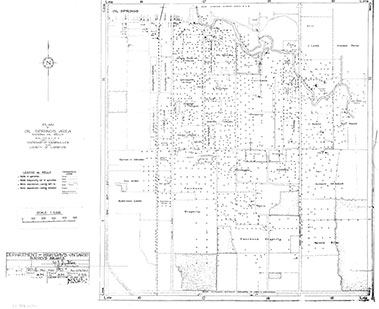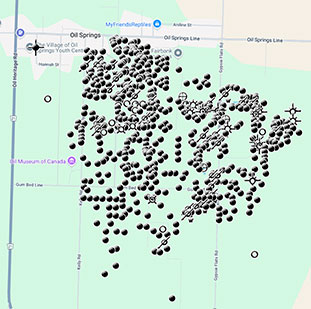Early Decommissioning Methods
The early methods and materials for plugging oil and gas wells, if they were plugged at all, may now be defective. This raises safety concerns for property owners, the public, and the environment.
Wells abandoned before 1907 were plugged with wood and rubble. Cement, wood plugs, and lead were used to plug wells from 1907 until the 1960s. In 1964, the regulatory act required a long cement plug; this is in line with practices today. Yet, improper cementing operations and cement degradation over time can also lead to failure.
Thousands of wells were installed and abandoned or orphaned over time. The first legislation on plugging wells came in 1872. They were not specific with the methods: “The abandoned well should be filled up, or the water flowing therein shut off in some other and what manner.” They cared more about preserving oil reservoirs than environmental contamination. The next two Acts, 1892 and 1907, still had a focus on preserving oil reservoirs.
It was not until 1918 that a Natural Gas Commissioner was appointed. Well-operators were required to get a license to drill, keep well records, and report plugging and abandonment methods.
The First World War, The Great Depression, and World War II had significant impacts on oil and gas well production and abandonment. Home front efforts collected and donated metal to manufacture guns and ammunitions during WWI. After the war ended metal was still in short supply. Operators abandoned low oil producing wells and pulled old casings which were sold for a high price. Without the protection of the casing in the well, saline groundwater (water with high levels of salt and minerals) could seep into the well and come to the surface.
During the Great Depression, money was tight, leading operators to further strip old wells of their casing and pipe to be reused in other wells. Often these items were corroded and weak, allowing for leaks and surface water to flood wells. Operators were forced to orphan wells.
During the Second World War, well equipment was expensive and not readily available. Skilled labour for drilling and proper abandonment was very limited as most experienced workers were on active war duty, resulting in more orphan wells.




 Subscribe to this page
Subscribe to this page